Ljubelj labour camp
The Ljubelj labour camp was the only camp in Slovenian territory during the Second World War. It was one of 49 subcamps of the Mauthausen concentration camp complex not far from Linz, Austria. More than a thousand prisoners worked in appalling conditions from 1943–1945 to build the present-day tunnel on Ljubelj (Loibl).
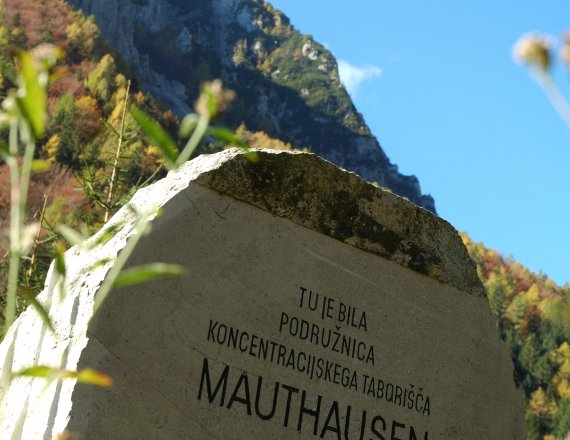 1 / 10 Ljubelj labour camp
1 / 10 Ljubelj labour camp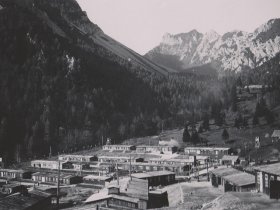 2 / 10 The camp during the time of...
2 / 10 The camp during the time of...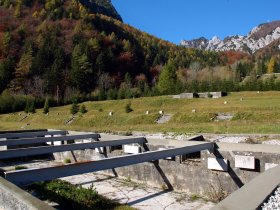 3 / 10 The foundations of the camp...
3 / 10 The foundations of the camp...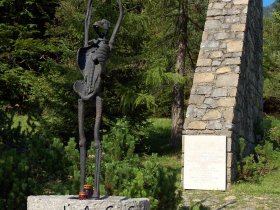 4 / 10 J'accuse.
4 / 10 J'accuse.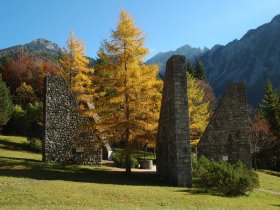 5 / 10 Memorial arena
5 / 10 Memorial arena
In 1941 motorized columns of Hitler's army stormed over Ljubelj (Loibl) Pass. Hitler was well aware of the importance of this route over the Karawanks towards the sea, so in accordance with his plans for conquest he decided to shorten the road over Ljubelj by means of a tunnel. Internees thus made a reality of the construction of a tunnel that Valvasor had written about back in the 17th century. The tunnel significantly facilitated the connection between Ljubljana and the Klagenfurt basin, which up until then crossed over the higher-lying natural pass of Ljubelj (Loibl), reached by a steep road..
Construction of the tunnel
The start of the construction of the tunnel, intended to improve the transportation connection with the region of then Yugoslavia, goes back to 1941. Because the partisans in June of that year burned down the camp, in which there were 42 civilians, the work was not continued until two years later. In addition to a barracks for civilian workers and technical administration, a barracks for camp inmates was erected on the left side, surrounded by barbed wire and four watchtowers. The labour force was provided by the Mauthausen extermination camp, to whom the labour camp in Podljubelj was militarily subordinated.
The first internees began to arrive in July 1943. The majority were French but there were also Poles, Russians, Yugoslavs, Czechs, Norwegians, Greeks, Belgians, Italians, Dutch, Luxembourgers, Germans, and Austrians. Most were political prisoners but some were interned for refusing forced labour or after being captured in raids. Germans and Austrians with a criminal record were given leadership roles or assigned easier work.
Despite a ban on contacts, civilian workers helped the prisoners, enabling contact with their families by smuggling in letters and packages. An especially important role was played by the engineer Janko Tišler from Golnik, who in 1944 fled to join the partisans when it was discovered that he was helping prisoners. He later wrote about his experience in the book Mauthausen at Ljubelj – the concentration camp at the Slovenian-Austrian border.
On 7 May 1945 all the internees were released, but SS units recaptured non-Yugoslav prisoners and used them as a human shield during their retreat to Carinthia through the Ljubelj tunnel. They were later liberated by the partisan army in Rosental.
The first vehicles passed through the more than 1500 metres long tunnel as early as in 1944, but the construction of the road and tunnel, which lies at an elevation of 1069 metres, was not completed until autumn 1963.
In order to hide the traces of their atrocities, the Germans demolished the camp. In memory of the victims and as a reminder of their wartime suffering, a memorial arena was erected at the edge of the park with a sculpture of a skeleton containing a living heart in the middle, with the inscription J'ACCUSE.
A virtual walk through the camp
contact and further information
TPIC Tržič, Trg svobode 18, 4290 Tržič
T: 04 59 71 536 / 051 627 057
E: informacije@trzic.si
Opening hours
A guided tour can be arranged with TPIC Tržič and Tržič museum (+386 4 5315 500; +386 31 337 311 and trziski.muzej@guest.arnes.si)
Entrance fee
Required only for guided tours.
- groups with more than 12 people: children, students, retired: 4,00 EUR/person, adults 5,00 EUR/person
- groups with less than 12 people: 62.00 EUR/group
- school groups and retired to 15 people: 55.00 EUR/group
